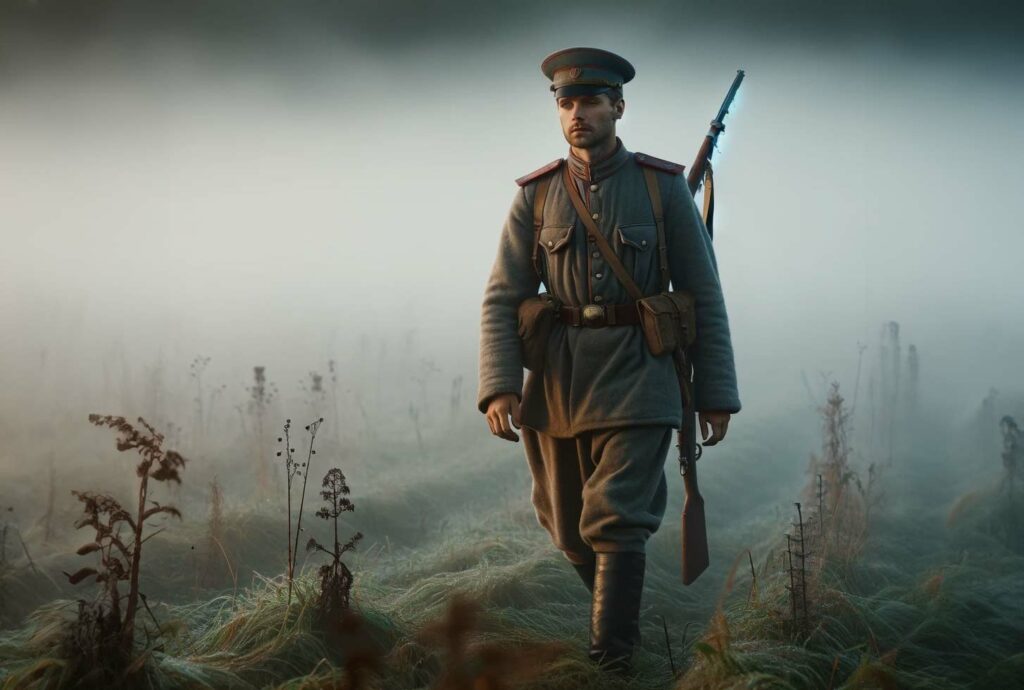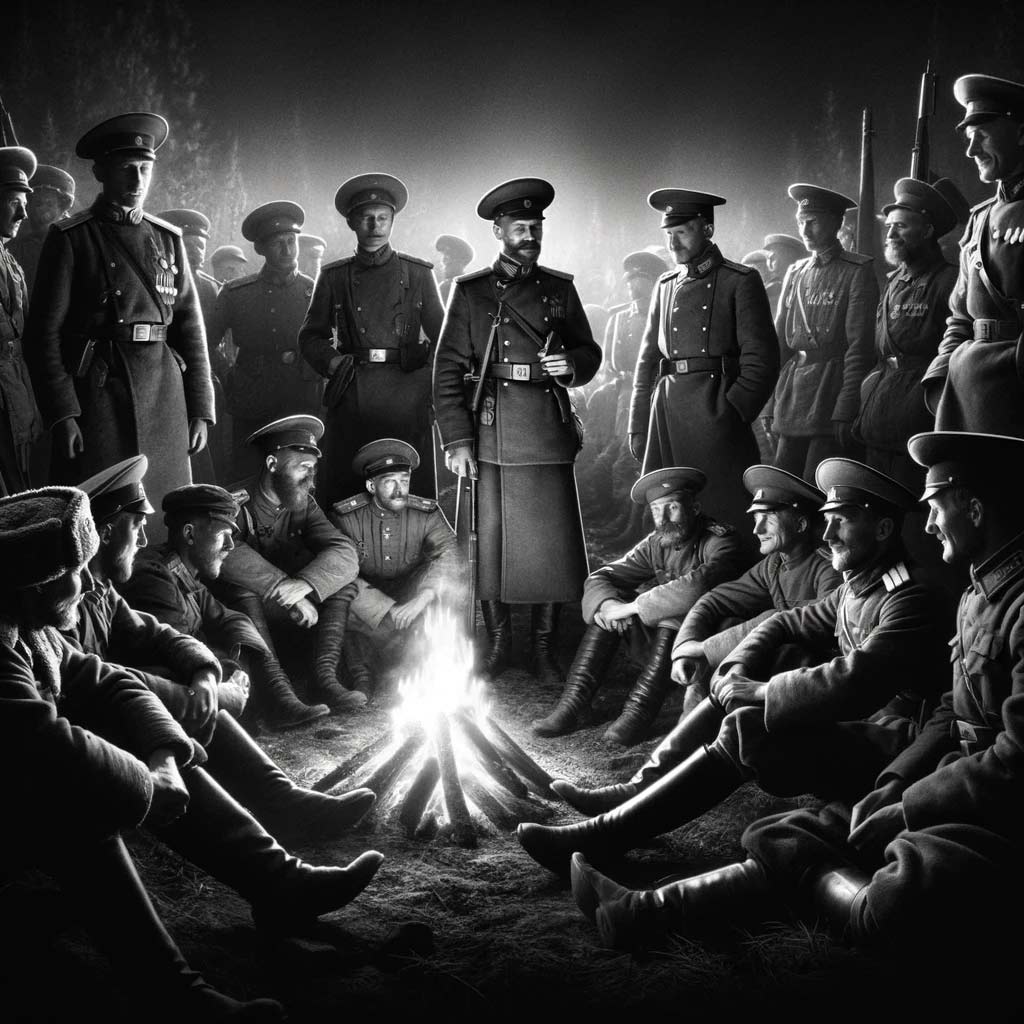Explore the Russian Civil War (1917-1922): from its causes, key battles, decisive moments, to its lasting global impact. Understand the conflict’s profound consequences.
The Russian Civil War, a multi-party war that unfolded after the October Revolution of 1917, was a pivotal period in Russian history. It followed the fall of the Russian Empire and the ensuing struggle for power, leading to widespread chaos and significant changes in the geopolitical landscape of the 20th century. The war was not only a fight between the Bolsheviks and their adversaries but also involved foreign interventions and a myriad of ethnic and ideological groups, each vying for control or autonomy.

What were the reasons for the Russian Civil War (1917-1922)?
The roots of the Russian Civil War are deeply intertwined with the political, social, and economic upheaval that characterized Russia’s entry into the 20th century. The immediate cause was the October Revolution of 1917, in which the Bolsheviks overthrew the Provisional Government. Long-standing grievances, such as the enormous losses and hardships suffered in World War I, widespread dissatisfaction with the autocratic tsarist regime, and acute socio-economic inequalities, contributed to a volatile environment. The abdication of Tsar Nicholas II in March 1917 left a power vacuum, leading to a struggle between the Bolsheviks, who sought to establish a communist state, and a range of opponents including monarchists, liberals, and non-Bolshevik socialists. The Treaty of Brest-Litovsk, which ended Russia’s involvement in WWI but conceded large territories, also fueled nationalist and anti-Bolshevik sentiments, further complicating the political landscape.
Who was involved in the Russian Civil War (1917-1922)?
The Russian Civil War was characterized by a complex array of participants. On one side were the Bolsheviks (Reds), led by Vladimir Lenin, committed to consolidating the revolution and establishing a communist regime. Opposing them were the Whites, a heterogenous group comprising monarchists, nationalists, liberals, and non-Bolshevik socialists, who sought to either restore the old regime or create a new one. Aside from these primary factions, various nationalist movements sought independence or autonomy, including the Ukrainians, Poles, Finns, and Baltic states. The Green armies, representing peasant insurgencies, and Black armies, notably the anarchist Black Army led by Nestor Makhno, were also involved. Foreign powers such as Britain, France, Japan, and the USA intervened, supporting anti-Bolshevik forces but with varied and often conflicting objectives. Notable figures included White leaders such as Admiral Alexander Kolchak and General Anton Denikin, and Red military leaders like Leon Trotsky.
Was there a decisive moment?
The decisive moment in the Russian Civil War was arguably the failure of the White Movement’s major offensives in 1919. Despite early successes, the Whites were unable to maintain momentum due to strategic blunders, logistical challenges, and a lack of cohesive leadership and ideology. The Red Army, benefiting from interior lines of communication, better organization, and the strategic leadership of Trotsky, managed to repel the White forces. The capture of Admiral Kolchak, a prominent White leader, in 1920, and the defeat of General Wrangel in Crimea later that year, marked the beginning of the end for the White resistance.
What were the major battles?
The major battles of the Russian Civil War were numerous and often brutal, reflecting the vast geographic and ideological scope of the conflict. Key battles include:
The Battle of Perekop (1920): A decisive battle where the Red Army defeated General Wrangel’s White forces, effectively ending major hostilities in the south.
The Battle of Tsaritsyn (1918): Later known as Stalingrad, this battle was significant for the control of vital transportation routes and resources. It was also notable for the involvement of future Soviet leader Joseph Stalin.
The Siege of Kazan (1918): A key victory for the Red Army, capturing a significant arsenal and solidifying control over the Volga region.
The Ufa Offensive (1919): A joint offensive by White Army generals Kolchak and Denikin, which initially made significant gains but ultimately failed due to strategic overreach and coordination failures.
These battles were characterized by fierce combat, shifting fronts, and significant civilian hardship. They not only shaped the course of the war but also left a lasting impact on the regions involved.
Was there a turning point?
The turning point of the Russian Civil War was the consolidation of Bolshevik power in 1919-1920. The successful defense against White offensives, the reorganization and discipline of the Red Army, and the ability to maintain control over the central and vital regions of Russia were critical. The collapse of the White-controlled fronts and the capitulation of key White leaders signified a shift from a multi-front war to mopping up remaining resistance. This period also saw the Bolsheviks implementing the policy of War Communism, which, despite causing immense hardship, helped in mobilizing resources for the war effort.

The consequences of the Russian Civil War (1917-1922)
The consequences of the Russian Civil War were profound and long-lasting. The victory of the Bolsheviks led to the establishment of the Soviet Union, a new geopolitical entity that would significantly influence global affairs throughout the 20th century. The war caused devastating losses, with millions of deaths and widespread destruction. The societal fabric of Russia was altered drastically, with old elites being replaced by new ones and a massive reorganization of the socio-economic order under communist ideology. Internationally, the war and subsequent Bolshevik victory led to a period of isolation and conflict with the capitalist West, setting the stage for future geopolitical tensions. The ideological and practical experiences of the war also influenced revolutionary and counter-revolutionary tactics worldwide.
The Russian Civil War was a watershed moment in Russian and world history. It was a conflict characterized by its complexity, brutality, and profound consequences. The victory of the Bolsheviks not only shaped the future of Russia but also had lasting effects on the global political landscape. The war’s legacy, marked by the rise of the Soviet Union, the spread of communist ideology, and the redefinition of power dynamics, continues to be studied and debated by historians and political scientists alike.
Back to the Wars section